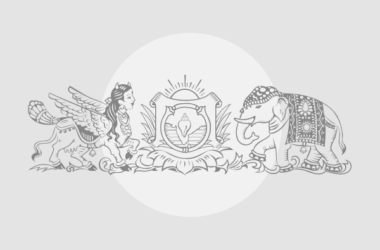Election marketing campaign materials at a store in Majestic, Bengaluru. File
| Picture Credit score: The Hindu
During the run as much as the overall elections to Lok Sabha of 2004, the Bharatiya Janata Social gathering (BJP)-led authorities put out ads with the tag line ‘India Shining.’ The marketing campaign led to an issue over the usage of public cash. Experiences state that an estimated ₹150 crore was spent for this marketing campaign, arguably one of many greatest government-sponsored commercial campaigns till then. Over the previous twenty years, this development has caught up with each Central and State governments spending loads on ads earlier than elections to the Lok Sabha and State Legislative Assemblies.
Limits on spending
In a democratic nation, it’s important for a authorities to unfold consciousness about its schemes and insurance policies. Within the first few a long time in impartial India, this was primarily accomplished via public conferences. Within the final three a long time, consciousness has been unfold via ads on print and digital media, which have a large attain. Nonetheless, at current, authorities ads printed or broadcast earlier than elections are typically campaigns of the ruling get together and set up character cults. In line with the Data and Broadcasting Ministry, the Central authorities had spent ₹3,020 crore on ads between 2018-19 and 2022-23. It have to be famous that the quantity spent was considerably greater at ₹1,179 crore through the election yr of 2018-19 as in opposition to ₹408 crore in 2022-23. This expenditure is more likely to rise in 2023-24 as the overall elections are due in April-Might. The Supreme Courtroom via its orders in Might 2015 and March 2016 laid down pointers for the regulation of presidency ads. Even then, ruling governments have a bonus earlier than elections relating to publishing ads that disturb the extent enjoying area.
Information |BJP’s social media spending was far greater than Congress’s
A well-known quote from Hamlet goes, ‘extra honoured within the breach than within the observance’. That’s meant for customs and legal guidelines which might be higher off being ignored than being adopted. Within the Indian electoral context, nevertheless, it has develop into a norm to breach the bounds on election expenditure. The truth is, this breach is taken into account as one of many important traits for successful an election.
The election expenditure restrict for candidates is ₹95 lakh per Lok Sabha constituency in bigger States and ₹75 lakh in smaller States. It’s an open secret that candidates of all main political events breach this restrict by a large margin even when we don’t take into account the unlawful distribution of money and presents to voters. In States infamous for this corrupt electoral observe, the official restrict shouldn’t be even a fraction of the particular election expenditure.
In India, there aren’t any limits on the expenditure of political events throughout elections. The official expenditure declared by the BJP and Congress for the 2019 elections was ₹1,264 crore and ₹820 crore, respectively. Nonetheless, a report by the Centre for Media Research (CMS) states that political events spent about ₹50,000 crore through the elections with the BJP spending about 50% of this quantity and the Congress about 20%. The report means that 35% of this cash was spent on campaigns, whereas 25% was distributed amongst voters illegally. Most of this funding comes from company homes and businessmen. This creates an unholy nexus between donors and elected representatives.
The elections in different giant democracies such because the U.S. and U.Okay. have additionally develop into expensive affairs. Nonetheless, it’s the opaque nature of a lot of the donations coupled with the distribution of money for votes that weakens the method of free and truthful elections in India. The Supreme Courtroom has struck down the electoral bonds scheme that may take away opacity in authorized donations. However that is akin to placing a band-aid on a bullet wound as the vast majority of the funding continues to be in unaccounted money.
In direction of a stage enjoying area
The Indrajit Gupta Committee (1998) and the Regulation Fee report (1999) advocated state funding of elections. Which means the federal government will contribute cash to political events or candidates for them to contest elections. The feasibility and mechanism for implementing this measure is uncertain within the current context. It requires consensus amongst all of the political events and self-discipline in following the norms of such state funding.
Electoral bonds verdict |Political affect of cash extends to ballot outcomes and authorities choices
However, the difficulty of the burgeoning value of elections will be sidestepped solely at our personal peril. The CMS pegs the seemingly expenditure through the 2024 basic elections at ₹1 lakh crore. On this regard, sure practicable steps for making a stage enjoying area and guaranteeing free and truthful elections will be applied if there may be political will. These are based mostly on the report, ‘Proposed Electoral Reforms’, submitted by the Election Fee of India in 2016. First, authorities ads must be banned six months previous to any basic election. Second, the legislation have to be amended to state {that a} get together’s ‘monetary help’ to its candidate must also be inside the limits of election expenditure prescribed for a candidate. Third, there must be a ceiling on expenditure by events. This can be saved at no more than the expenditure ceiling restrict supplied for a candidate multiplied by the variety of candidates of the get together contesting the election. Lastly, further judges will be appointed in Excessive Courts for quick disposal of election-related instances that might act as a deterrent in opposition to the violation of norms. These reforms would require bipartisan political assist to be effected. Nonetheless, until they’re applied, the large bills of election spectacles shall be borne by us, ‘We the folks’.
Rangarajan R. is a former IAS officer and creator of ‘Polity Simplified’. He trains civil-service aspirants at ‘Officers IAS Academy’. Views are private






